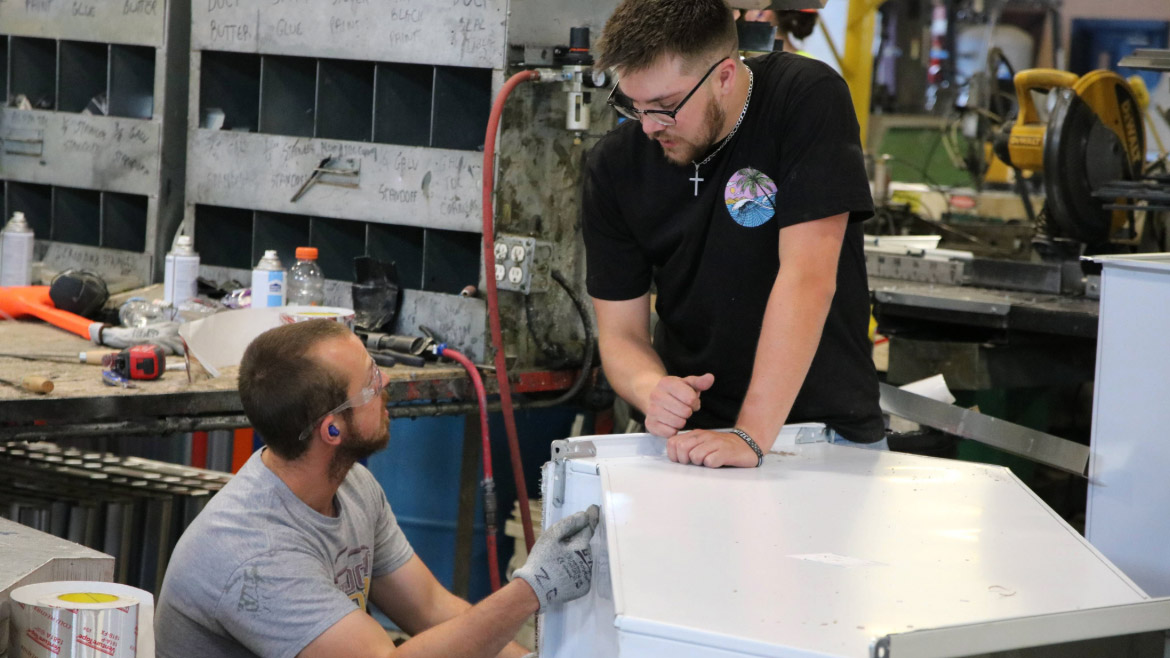In the dynamic and often hazardous world of construction and renovation, occupational safety and health is a paramount concern. Work in the sheet metal and HVAC trade includes working around potential risks at every turn. In such an environment, supervisors play a crucial role in ensuring the safety and well-being of every worker. Their responsibility extends beyond mere oversight; they are the linchpin in creating a culture of safety that permeates every aspect of the project / work process. I’ve mentioned these items in prior articles including how supervisors are the “bridge” between management and labor but let’s discuss in more detail how supervisors play a critical role in safety and health, and why their leadership is essential for successful project outcomes.
The Foundation of Safety Leadership
Supervisors are the frontline leaders on most projects, responsible for overseeing daily operations and ensuring that safety and health protocols are adhered to. They bridge the gap between management and workers, translating safety policies into actionable practices on the ground. Their leadership sets the tone for the entire team, influencing attitudes towards safety and encouraging compliance with regulations.
A supervisor’s commitment to safety begins with a thorough understanding of the site-specific risks and the implementation of appropriate measures to mitigate them. This requires a keen awareness of the work environment, potential hazards, and the skills to assess risks accurately. By prioritizing safety from the outset, supervisors lay the foundation for a culture that values the health and well-being of every worker. So, giving supervisors the tools to become knowledgeable in OSHA standards and regulations is important.
Training and Education: Empowering the Workforce
One of the most critical roles of a construction supervisor is to ensure that all team members are adequately trained and educated about safety practices. This involves organizing regular training sessions, providing up-to-date information on safety standards, and fostering an environment where workers feel comfortable seeking guidance.
Through effective training, supervisors empower workers with the knowledge and skills necessary to identify potential hazards and take appropriate action. This proactive approach reduces the likelihood of accidents and ensures that workers are equipped to handle unexpected situations with confidence. Moreover, by fostering open communication, supervisors encourage workers to report unsafe conditions without fear of retribution, leading to a more transparent and responsive safety culture. But supervisors have a lot on their plate so management needs to be aware of the assigned tasks and how supervisors can handle the added responsibilities.
Monitoring and Enforcement
While training and education are vital, they are not sufficient on their own. Supervisors must also actively monitor worksite activities to ensure that safety protocols are consistently followed. This involves conducting regular inspections, identifying potential risks, and enforcing compliance with safety regulations.
Supervisors play a crucial role in addressing non-compliance swiftly and effectively. By taking corrective action and providing constructive feedback, they help workers understand the importance of adhering to safety standards. This not only prevents accidents but also reinforces a culture of accountability where safety is everyone’s responsibility. Interaction with Safety Managers plays a vital role here as the added expertise can make a huge difference.
Crisis Management: Navigating Emergencies
Despite the best preventive measures, emergencies can still occur on construction sites and shop environments. In such situations, supervisors are often the first to be contacted. Their ability to respond swiftly and effectively can mean the difference between a minor incident and a catastrophic accident.
Supervisors should be trained to manage crises, coordinate emergency response efforts, and ensure that all workers are accounted for and safe. Their leadership during emergencies is critical in minimizing harm and ensuring that the situation is resolved as quickly as possible. Moreover, supervisors are often involved in post-incident analyses and investigations to identify lessons learned and implement measures to prevent future occurrences.
Building a Safety Culture
Ultimately, the most effective supervisors are those who foster a culture of safety that permeates every aspect of the project process. This involves more than just enforcing rules; it requires a commitment to building relationships based on trust and respect. Supervisors who lead by example, demonstrate genuine concern for their workers’ well-being, and recognize the contributions of their team members are more likely to inspire a collective commitment to safety.
A safety culture is one where every worker understands their role in maintaining a safe work environment and feels empowered to take proactive measures to protect themselves and their colleagues. By promoting this culture, supervisors help ensure that safety becomes an integral part of the process, rather than an afterthought.
Conclusion: The Backbone of Project Safety and Health
In conclusion, supervisors are the unsung heroes of safety and health in the sheet metal and HVAC industry. Their leadership, expertise, and dedication are essential in creating a work environment where safety is prioritized above all else. From training and monitoring to crisis management and fostering a safety culture, supervisors play a multifaceted role that is crucial to the success of any project.
As the industry continues to evolve, the importance of skilled and committed supervisors cannot be overstated. By recognizing and supporting their efforts, we can ensure that construction sites, fabrication shops and other work sites are safer and more productive, ultimately benefiting everyone involved.
Whether you require installation, repair, or maintenance, our technicians will assist you with top-quality service at any time of the day or night. Take comfort in knowing your indoor air quality is the best it can be with MOE heating & cooling services Ontario's solution for heating, air conditioning, and ventilation that’s cooler than the rest.
Contact us to schedule a visit. Our qualified team of technicians, are always ready to help you and guide you for heating and cooling issues. Weather you want to replace an old furnace or install a brand new air conditioner, we are here to help you. Our main office is at Kitchener but we can service most of Ontario's cities
Source link



Add Comment